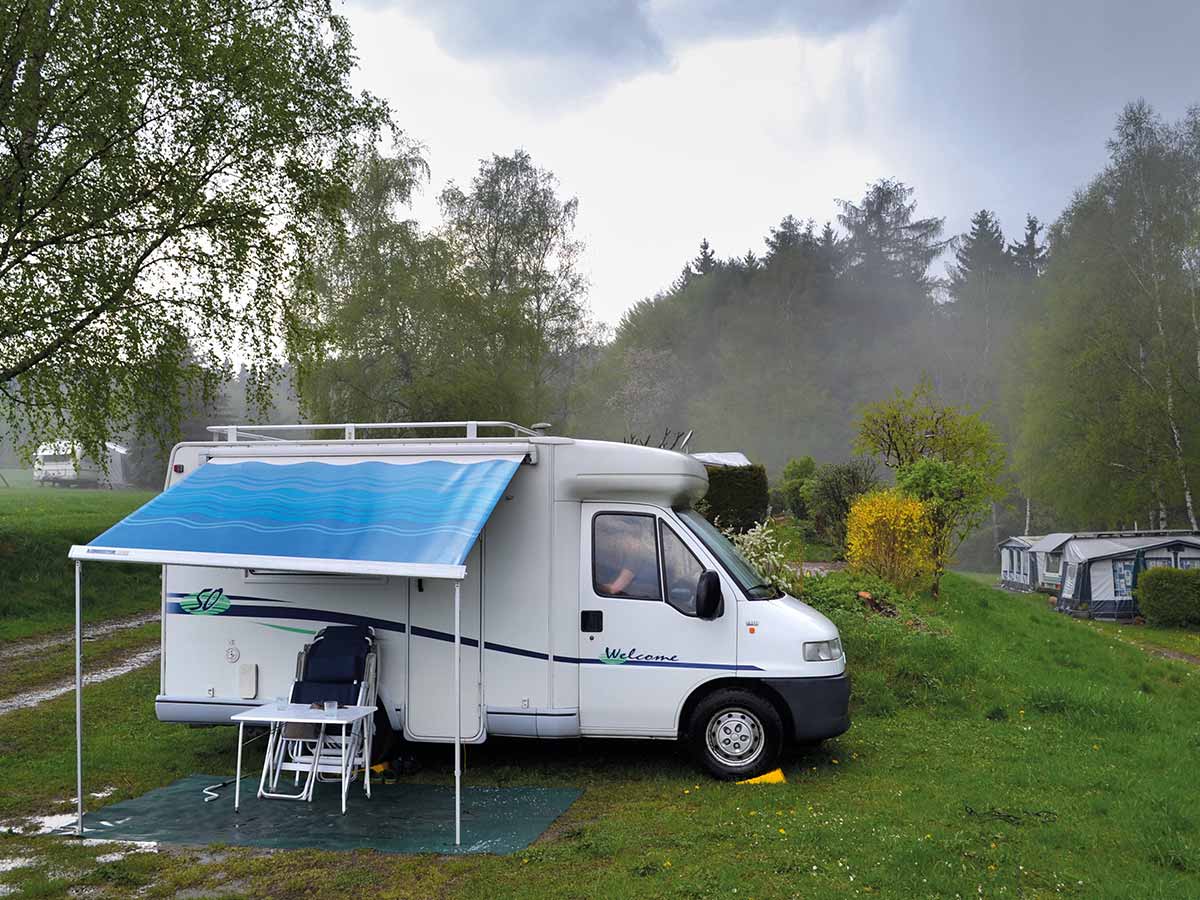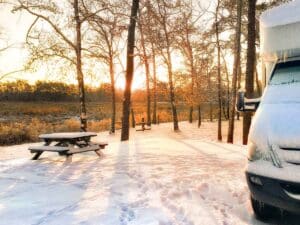In our new Motorhome Maintenance column, industry expert Andrew Tapp (Platinum Motorhomes and RV Inspections Ltd) shares his top tips and personal observations from 20+ years in the motorhome industry.
When it comes to motorhome or caravan maintenance, you can’t avoid talking about water. It has an uncanny ability to find its way into every nook and cranny, in the most unforgiving way. Over the years I have seen countless examples of extensive damage caused by moisture, resulting in costly repairs.
Luckily, there’s plenty you can do to prevent it from happening to your RV.
The main reason motorhomes and caravans are affected comes down to simple physics. They’re moving objects bumping, twisting and racking along on unforgiving roads and built of separate components. Their joints and seams are all subject to constant movement. Sealants are used in the construction of RVs to bind together different types of material (fibreglass to plastic, plastic to aluminium, etc), which expand and contract at different rates, putting pressure on the sealant.
Even if you don’t use your motorhome that much, it’s still subject to the elements – rain, wind, and of course New Zealand’s harsh sun. Motorhome roofs will hold water because of the way they’re put together. Flat roofs are never totally flat and as gravity takes over, they are often dished and water pools due to the lip on the wall-to-roof capping.
What can you expect?
After four to five years, but sometimes sooner, things will start to deteriorate on your motorhome or caravan and it’s time to get it looked at professionally. If you’re buying a second-hand motorhome or caravan older than this, I’d strongly advise having a pre-purchase inspection done by a reputable professional. I’ve lost count of the times I’ve had clients tell me that they wish they’d talked to me or sought expert advice before purchasing. Professional knowledge allows an expert to identify what many other may miss. Advice can then be shared around what is involved in fixing the problems, including from water damage.
The three main reasons why water gets in are due to sealants breaking down, rubbers letting go and delamination.
So, let’s talk about each in turn.
What happens when sealants break down?
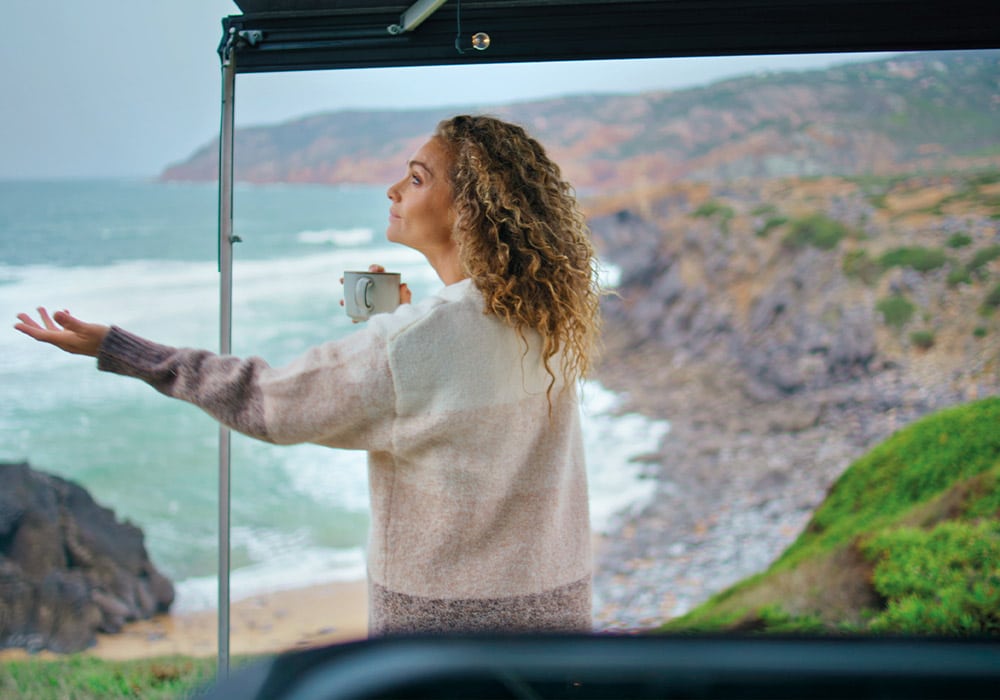
You can expect that sealants will break down after four to five years, but I have often seen it happening much sooner than that, particularly in imported caravans due to the lower UV-rated products used in construction overseas.
Sealants are the glues and adhesives used to bind together body panels and to seal in place cappings, windows, hatches, locker doors, power inlet plugs and other plastic components. They aren’t a permanent thing and will eventually start breaking down and letting go. Leave it too long, and it resembles a rubber band and no longer provides protection against water ingress, which can lead to rot and delamination, where surfaces and components come apart.
Unfortunately, there’s not much you can do to prevent sealants breaking down, but I recommend a yearly visual inspection to ensure that you catch any issues early.
You can expect the plastic components on your motorhome and caravan to degrade within a few years, too, and it’s something I strongly recommend you keep an eye on. As an RV repairer, a considerable part of our work is to replace these parts. So, it isn’t just about the sealant holding in these components – it’s about taking good care of the plastic components themselves as part of your yearly maintenance.
Recommendations
- Keep your vehicle under cover when possible.
- Check the plastic components on your motorhome yearly.
- Use dry lube spray on locker locks, hinges, and any other moving plastic parts to reduce friction, and lessen the force required to operate.
- Use protective sprays on the surface of plastics to give more UV protection.
How to spot signs of delamination
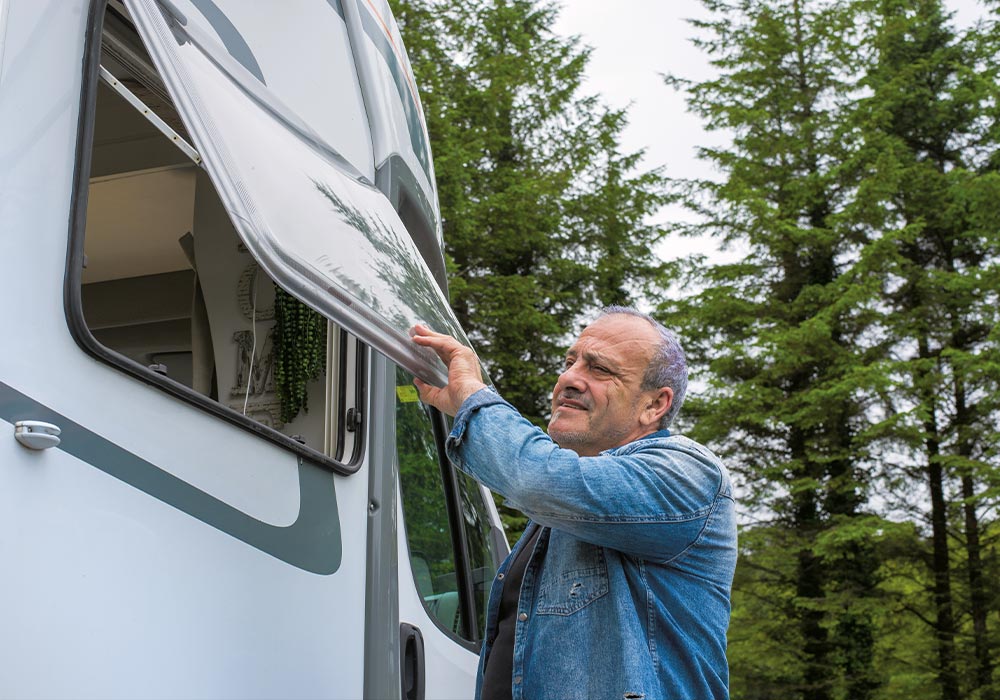
four to five years, sometimes sooner
Delamination is a common problem in motorhomes and caravans that occurs when the glue holding the layers of a vehicle together starts to wear off. It can happen on the floor, sidewalls, or roof, and can be identified by a spongy feeling, noises or visible wobbles.
Delamination is most often seen under the floor as a result of moisture being forced up into any gaps or unsealed joints when driving. Unfortunately, I often see low-grade plywood used in motorhome and caravan construction, which becomes a real issue when it’s not sealed or resined properly, or the plywood flooring doesn’t meet the wall.
To check your current or prospective RV for signs of delamination, you need to feel for moisture. Does it feel wet or spongy? On a caravan, you need to check all four corners and wheel wells, and on a motorhome the back two corners, as well as around the wheel wells and any cable or pipe penetrations.
Recommendations
- Check under your RV for any gaps or unsealed joints and plywood.
- Check for moisture around wheel wells, penetrations, windows and more.
- Keep your motorhome stored on concrete or shingle (not on grass or dirt) and covered. Air out frequently.
- Get it looked at asap, leaving it will only weaken the glue more and it’ll become an even bigger job.
Why your window rubber seals need extra attention
The seals (rubbers) around motorhome and caravan windows and hatches are often the culprit when things go wrong. Once water gets in, you’ll see rot not just around the windows but all the way down the wall panels. To fix that, you’ll then need to possibly strip out interior cabinets to access the damaged areas and to investigate the extent of the repair required.
The rubbers are often black and sit trapped behind tinted windowpanes, exposed to harsh sunlight. It’s no wonder they become brittle and break down. The sealant used to glue the rubber seals on with on imported RVs is like a tape with a sticky chewing gum-like consistency. When it gets really hot, it will actually run.
If you own a caravan, you need to pay extra attention to the angled front windows. I often see caravans parked nose down, which results in water coming off the roof running straight down to these windows.
Depending on how your RV has been stored, you are again looking at four-five years before the rubber window seals need checking.
Recommendations
- Spray rubbers with protective spray, storage.
- Avoid parking your caravan nose down.
- Keep your motorhome covered and out of the sun when not in use.
Did you know?
On 1 Oct 2023, NZTA introduced new stringent inspection criteria for rot, moisture and delamination in recreational vehicles. This has caught out many unsuspecting motorhome and caravan owners. Many motorhome manufacturers require a yearly water ingress test for warranty purposes.
Introducing our new motorhome advice columnist
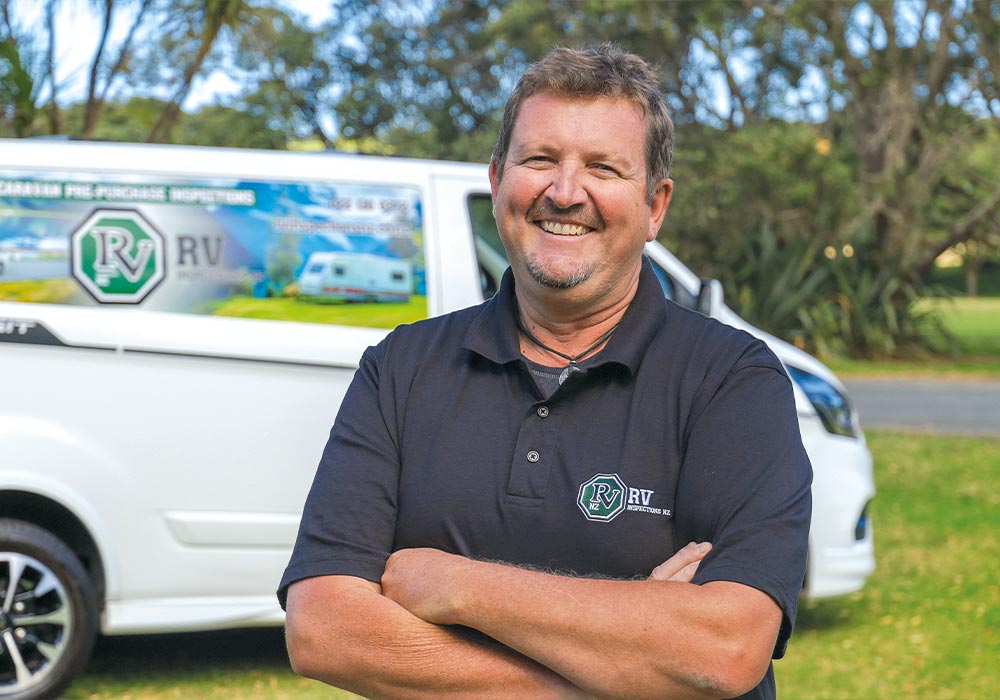
Andrew Tapp is a veteran of the motorhome and boatbuilding industries. He converted his first 9m Hino in 2002 before designing his own series of luxury motorhomes. He’s a certified repairer for all insurance companies and has worked on all classes and types of RVs, motorhomes and caravans. In short, he’s seen it all and is now putting his decades of experience to good use, providing prepurchase inspections for prospective motorhome owners.

